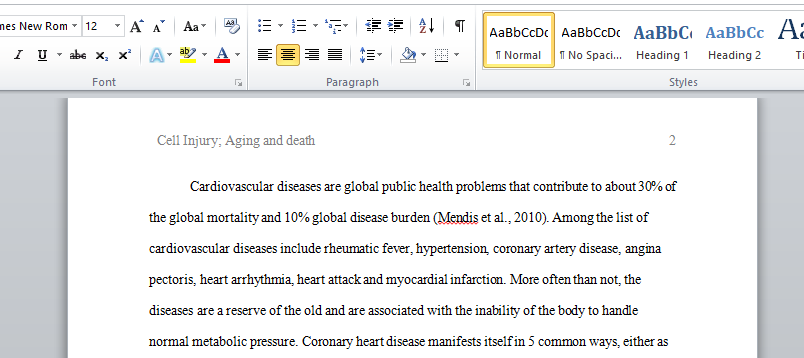Discuss cell injury; aging and death
Cell Injury; Aging and Death
Hydropic swelling is an early indicator of cell injury. It results from Na+-K+ pump dysfunction at the cell membrane; intracellular accumulations of abnormal endogenous or exogenous particles indicate a disorder of cellular metabolism.
Adaptive cellular responses indicate cellular stress caused by altered functional demand or chronic sublethal injury. Hypertrophy and hyperplasia generally result from increased functional demand. Atrophy results from decreased functional demand or chronic ischemia. Metaplasia and
dysplasia result from persistent injury. Necrosis occurs when the injury is too severe or prolonged to allow adaptation and is usually a consequence of disrupted blood supply; apoptosis is cell death resulting from activation of intracellular signaling cascades that cause cell suicide. Apoptosis is tidy
and not usually associated with systemic manifestations of inflammation. Etiology of cellular injury includes hypoxic, ischemia, reperfusion, nutritional, infectious and immunologic, chemical, physical, and mechanical injuries.
Aging is theoretically distinct from disease and is thought to be the result of accumulated DNA damage, decreased proliferative capacity of stem cells, and accumulated metabolic damage.
Age-related changes in body systems can generally be described as a decrease in functional reserve and a reduced ability to adapt to environmental demands. Somatic death is characterized by the absence of respirations and heartbeat. Definitions of brain death have been established to describe death in instances in which heartbeat and respiration are maintained mechanically…………………………………………………
Case Study:
Mr. Smith, a 60 year-old man with coronary heart disease, experienced frequent bouts of angina pectoris. One day while moving a piece of heavy furniture, he experienced excruciating pain over his left chest. He began sweating heavily, became short of breath, and then collapsed. He was transferred to the emergency room at a nearby hospital. Mr. Smith’s EKG was diagnostic of myocardial infarction.
A coronary angiography was performed and an occlusion was found in a in the descending branch of the left coronary artery. Intravenous drugs were
administered to dissolve the clot that was causing the obstruction. His cardiologist informed him that some of his heart muscle had died as a result of the myocardial infarction.
Discussion Questions:
1. Discuss the risk factors for a myocardial infarction.
2. As per your analysis, what type of cell injury did Mr. Smith sustain and why?
3. Differentiate between reversible and non-reversible cell injury.
4. Discuss the pathophysiological changes that occur during a myocardial infarction.
5. Correlate the subjective and objective findings of a myocardial infarction with the disease
Answer preview:

Words: 729
